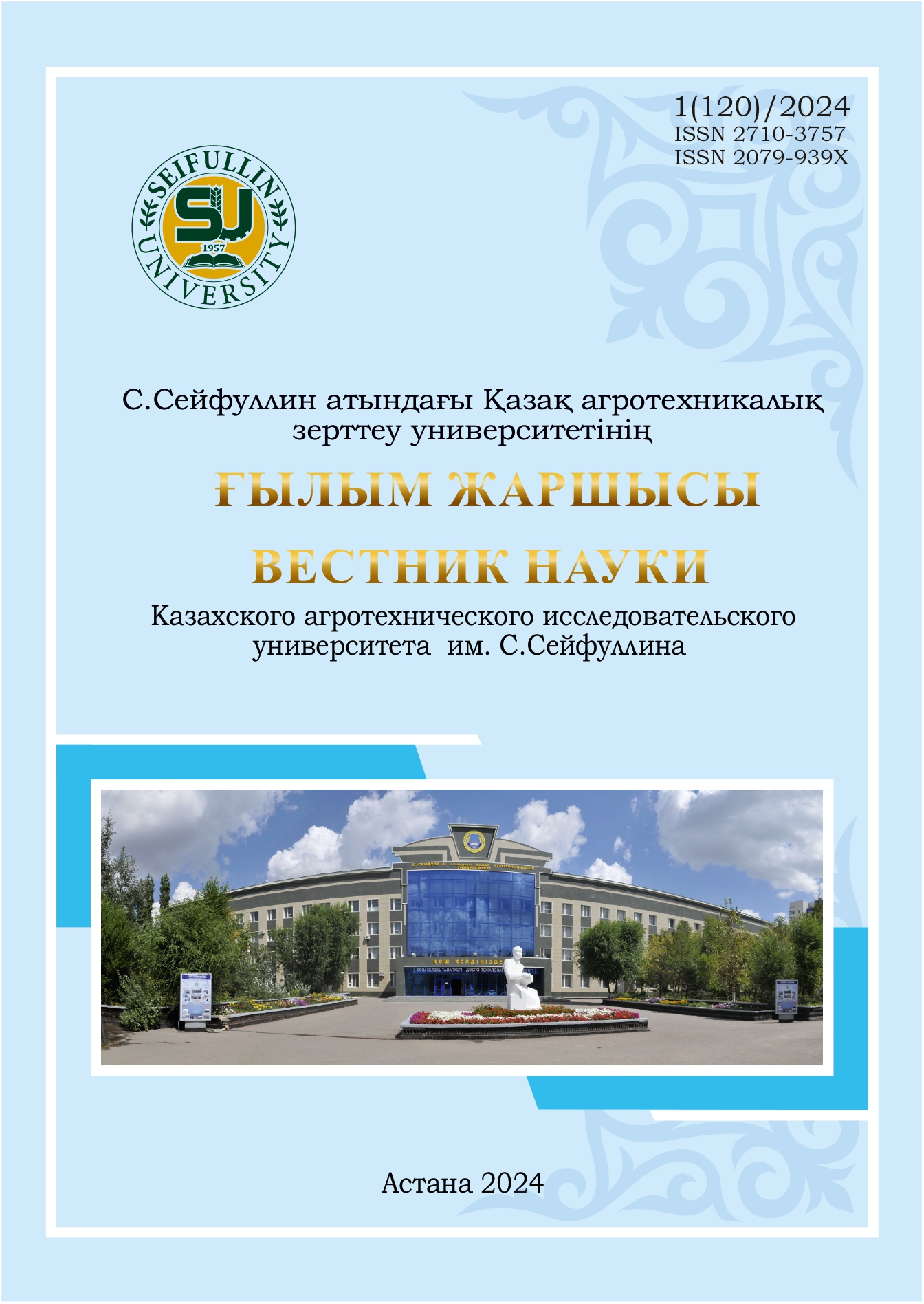CONTENT VITAMIN C IN COTONEASTER MELANOCARPUS (COTONEASTER MELANOCARPUS FISCH. EX. BLYTT.) TO THE AKMOLA REGION
DOI:
https://doi.org/10.51452/kazatu.2024.1(120).1614Keywords:
Cotoneaster melanocarpus Fisch. ex. Blytt.; vitamin C (ascorbic acid); woody plants; titrimetry; biofarmation.Abstract
This article presents a study of the pharmacological value of Cotoneaster melanocarpus Fisch. ex. Blytt. on the content of vitamin C (ascorbic acid). The fruits were harvested in the summer and autumn of 2022, in the state national natural parks of Kokshetau (Zerenda) and Burabai (Shchuchinsk). The chemical analysis was carried out by titrimetry in the laboratory of biotechnology of the “Bolashaq Saraiy”. The results of the study showed that the content of ascorbic acid in the fruits of the (Cotoneaster melanocarpus Fisch. ex. Blytt.) is influenced by the geographical factor of the place of growth of the dogwood and the time of harvest. The maximum accumulation of vitamin C in raw materials is reached in late August, early September. The most vitamin C-rich raw materials collected in the northern part of the Akmola region of the village of Zerenda, Shchuchinsk - 0.24 and in the fruits of Cotoneaster melanocarpus Fisch. ex. Blytt. purchased in pharmacies amounted to only 0.14%. A comparative analysis of the vitamin C content in the fruits of woody and shrubby plants showed that (Cotoneaster melanocarpus Fisch. ex. Blytt.) is among the leaders in ascorbic acid content - 90 mg/100 grams. Based on the data obtained, it can be concluded that the reproduction of a woody shrubby plant - Cotoneaster melanocarpus Fisch. ex. Blytt. is of great importance for economic purposes, and the use of its fruits can be widely used in pharmacology.

